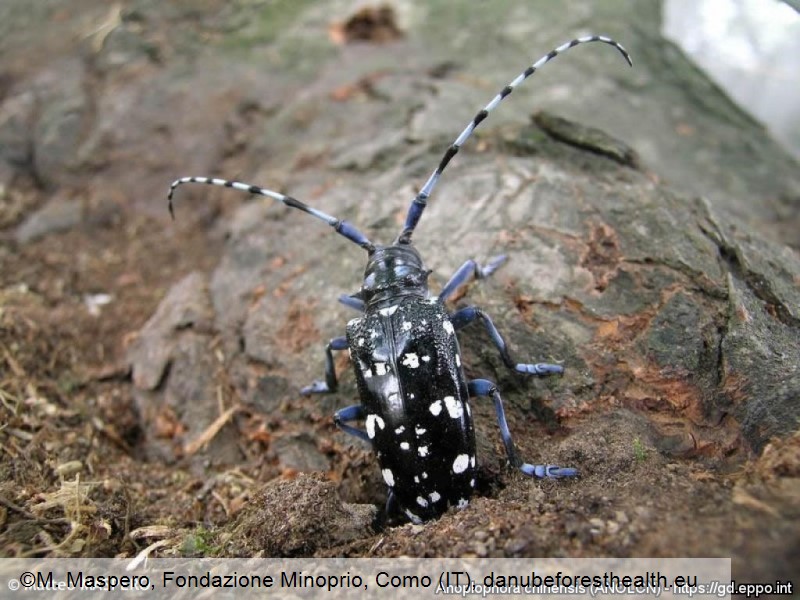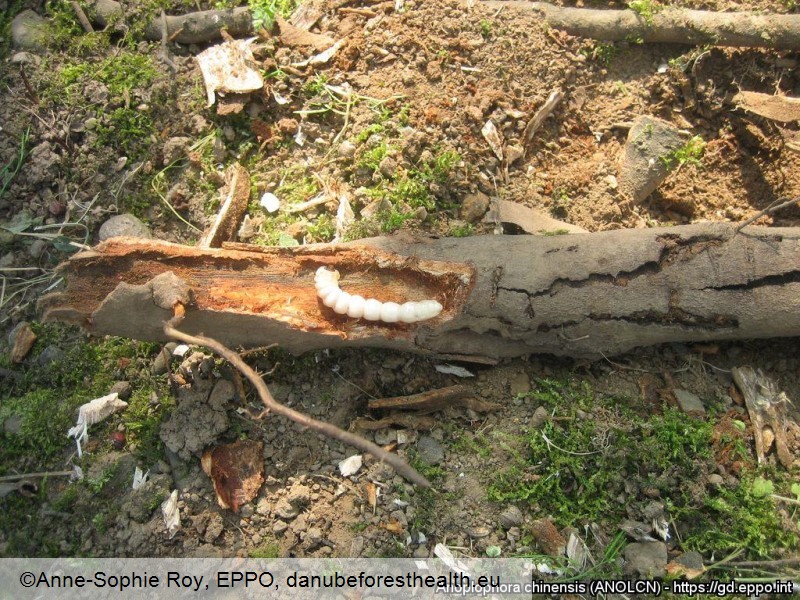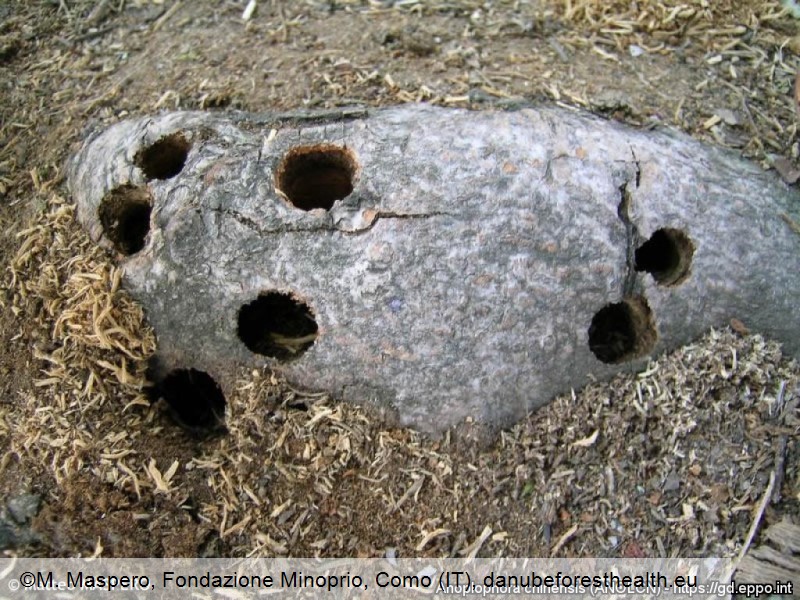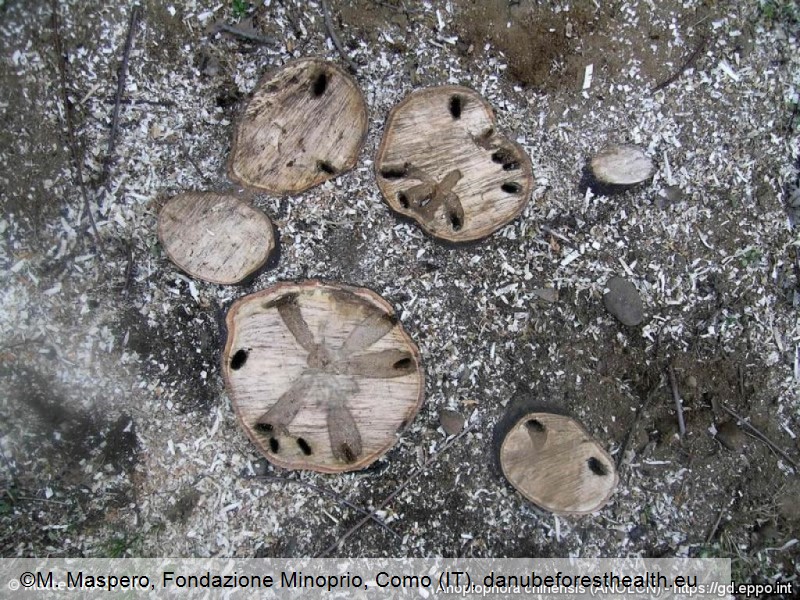Animalia
Citrus longhorn beetle
Anoplophora chinensis
Andreja Kavčič
|
|

Fig. 1. Dieback of a plant due to the citrus longhorn beetle infestation

Fig. 2. An A. chinensis female laying eggs

Fig. 3. An A. chinensis egg

Fig. 4. The citrus longhorn beetle larva in the gallery inside a host plant

Fig. 5. A. chinensis pupa in the wood

Fig. 6. A. chinensis exit holes and frass on an exposed root of a host tree

Fig. 7. Damage caused by A. chinensis larvae (tunnels in wood) with secondary fungal infections
DETECTION PERIOD:
April to October
DESCRIPTION:
Adults are 21–37 mm long beetles. The body is black and shiny. The beetle has up to twenty small, irregularly shaped, white to bluish white spots on elytra. Antennae are longer than the body and striped. Eggs are white, elongate, 6 mm long. Larvae are cream white, with a dark brown to black head, without legs. A grown larva measures 50–60 mm in length. It has a chitinized plate on the dorsal side of the prothoracic segment. Pupa is 24–35 mm long, cream white, with clearly visible extremities of the adult beetle. The citrus longhorn beetle is highly polyphagous. Larvae develop in hardwoods of more than hundred species, in the lower part of the trunk and in roots. Development in wood lasts one to two years. Adults emerge from May to August through round, 15 mm wide exit holes.
HABITAT:
Natural habitats, nurseries, plantations and urban areas. Its host plants are Acer spp., Aesculus hippocastanum, Alnus spp., Betula spp., Carpinus spp., Citrus spp., Corylus avellana, Fagus spp., Malus spp., Platanus spp., Populus spp., Prunus spp., Pyrus spp., Ulmus spp. and many others.
STATUS:
The citrus longhorn beetle originates from SE Asia and is a quarantine pest for Europe. The species has been found in several European countries, of which Croatia is in the Refocus area. The main introduction pathways are plants for planting and finished miniature trees (bonsai). It has been neither found nor intercepted in Slovenia so far.
IMPACT:
Main damage is caused by larvae, which feed on wood and create extensive tunnels in the live plant tissue. The mechanical damage results in the disruption of water and nutrient transports, leading to plants losing their vigor and defense ability, and is followed by wilting and canopy dieback. The citrus longhorn beetle attack generally leads to the death of the plant. The damage caused by adults´ maturation feeding on the bark of young shoots and leaves leads to substantial yield losses. A. chinensis causes extensive economic damage in plantations (fruit trees) and in urban areas. The impact of the Asian longhorn beetle in native habitats, such as forests, in its introduced range is not known.
SIMILAR SPECIES:
The Asian longhorn beetle (Anoplophora glabripennis), which is also a quarantine pest. The main difference is in the texture of the base of elytrae, which is covered with small granules in A. chinensis but smooth in A. glabripennis. Also, A. glabripennis larvae develop in the upper part of the host, upper trunk and branches. Similar symptoms and signs are caused also by certain native insects, such as Cerambyx cerdo, Morimus funereus, Lamia textor and Cossus cossus.
|